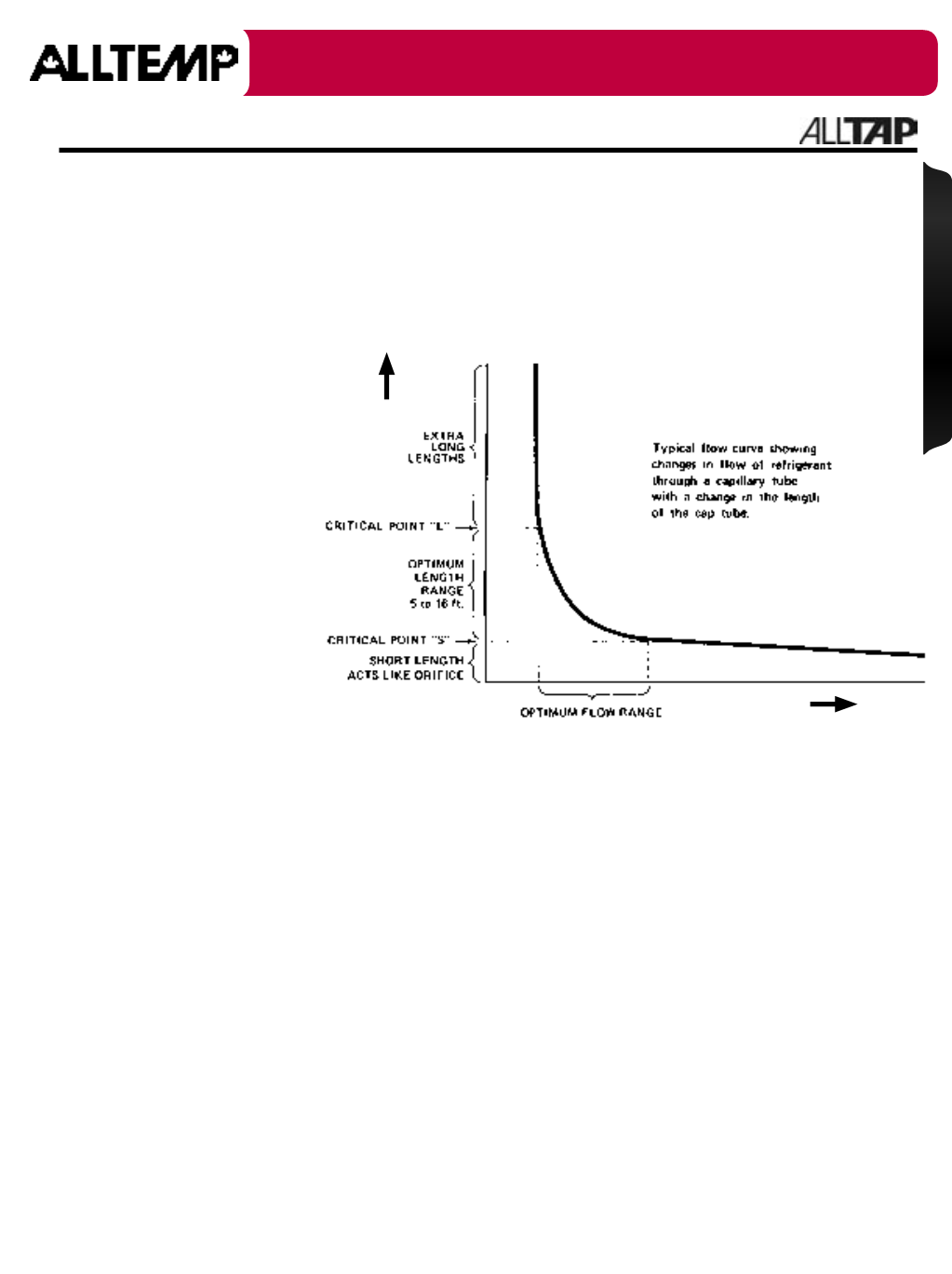
72
Refrigeration
Capillary Tubing - Factors Affecting Refrigerant Flow (Diameter & Length)
The size of the cap tube is fairly critical. Unlike orifices, such as expansion valve seats, capillary tubes depend on
their length as well as their diameter to determine their total restriction. The relationship between these two factors
are shown in the following charts. A change in diameter on a percentage basis can change the flow more than an
equal change in length. To illustrate, changing the diameter by .005" as between .026" I.D. and .031" I.D. can double
the flow. Restriction can also be changed by lengthening or shortening the cap tub. The longer the tube, the slower
the flow; the shorter the tube, the faster the flow. The general flow curve graph (right) shows what happens to the
flow of refrigerant through a cap tube as the length is changed. This curve is not meant to give specific flows but to
simply illustrate what happens with all cap tubes so that the general flow pattern can be understood.
By following the flow curve
from left to right it can be
seen that for the very longest
length the flow is the smallest.
Then as the cap tube length is
decreased, the flow increases
slowly until critical point "L" is
reached. At this point the flow
increases more rapidly with
each reduction in length until
critical point "S" is reached.
From this point on, further
decrease in length causes
ever increasing flow. From
the study of this typical curve,
certain pertinent conclusions
can be reached that directly
affect the field application of
capillary tubes.
On the graph, the section above the critical point "L" is marked as extra long lengths. Attempting to increase
restriction (i.e. reduce flow) by increasing length into this region is not only uneconomical but frequently hopeless.
In addition, tubes in this range may not be responsive enough to changes in head pressures during operation. All in
all, tube lengths in this range should be avoided where possible.
Continuing down the graph, the section below critical point "S" should be avoided like the plague. In this range, the
tube is so short that even small changes in length will cause very large increases in flow. This is caused by the fact
that the length no longer affects the flow and the tube now begins to act more like an orifice than a capillary tube.
But, without the other components necessary to control an orifice, such as are present in an expansion valve or
high side float, a very short cap tube will give wildly erratic operation under varying ambient and loads.
All of this would be meaningless without some definite way to use this information. Although the critical points will
vary depending on the I.D. of the cap tubing being used, a very safe operating rule-of-thumb can be offered.
RULE OF THUMB
Keep the cap tube no shorter than 5' and no longer than 16'. As in all general rules there are of course
exceptions, but for day to day operation, keeping a cap tub within the 5' to 16' range will eliminate many
problems.
An easy way to avoid these problems is to use the R-Line application charts and R-Line capillary tubing. These
charts offer recommendations for almost all cap tube systems from 1/20 HP to 5 HP, plus any air conditioner from
small window units to large central systems using multiple cap tubes.
Capillary Tubing
LENGTH
FLOW
Capillary Tubing


